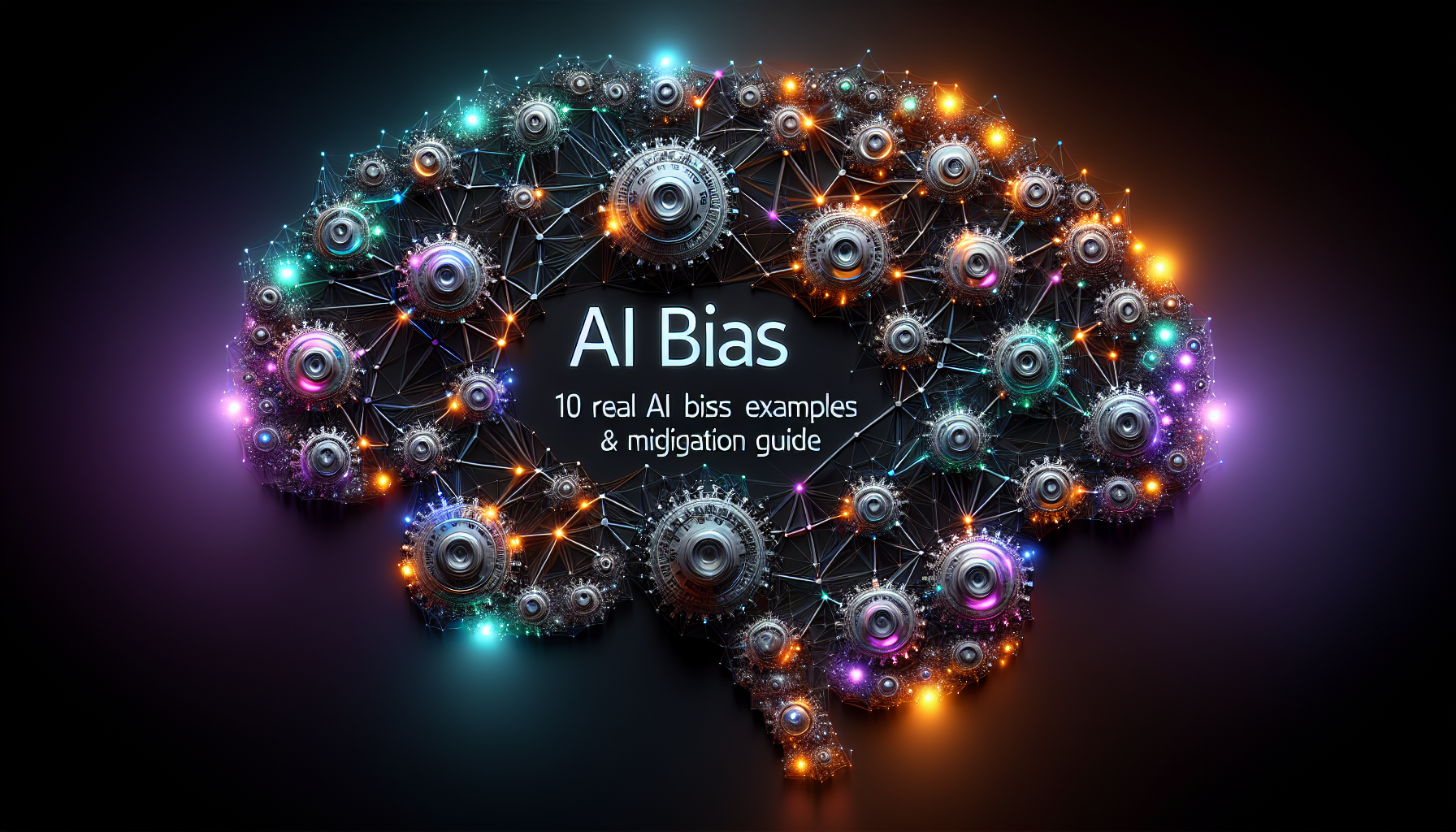AI Bias: 10 Real AI Bias Examples & Mitigation Guide
AI bias refers to systematic and unfair discrimination that arises when artificial intelligence systems reflect or amplify prejudices present in their training data or design. Below, we'll explore 10 real-world examples of AI bias, along with practical mitigation strategies, as supported by recent industry reports and expert guides.
10 Real AI Bias Examples
Amazon’s AI Recruiting Tool
Amazon's AI-powered recruiting tool penalized resumes containing the word “women’s” and graduates of all-women colleges, due to training on male-dominated historical hiring data.
COMPAS Recidivism Algorithm
Used in US courts, the COMPAS algorithm was found to incorrectly classify Black defendants as high-risk at nearly twice the rate of white defendants: 45% vs. 23%.
Healthcare Risk Prediction Algorithms
Algorithms used to allocate extra medical care in US hospitals heavily favored white patients over Black patients, as healthcare cost history (a proxy variable) reflected systemic disparities in healthcare access.
Google Ad Targeting
Google’s ad system was found to show high-income job ads more often to men than to women, reinforcing gender stereotypes in employment opportunities.
Age Discrimination in Recruitment
iTutorGroup’s AI system screened out women over 54 and men over 59, resulting in a legal settlement for age-based discrimination.
Facial Recognition Technology
Facial recognition systems have shown higher error rates in identifying women and people of color, leading to misidentification and unfair targeting (supported broadly by industry literature).
Credit Scoring and Loan Approvals
AI systems in banking have been shown to offer less favorable terms or more rejections to minority applicants, reflecting historical biases in financial data.
Customer Service Bots
Some AI customer service platforms deliver consistently poorer support to users from certain regions, indicating proximity or demographic bias.
Medical Diagnosis AI
Diagnostic tools may underperform on patients from minority groups if trained primarily on data from majority populations.
Image Recognition
AI trained predominantly on Western datasets may mislabel or fail to recognize objects, faces, or cultural artifacts from other regions or groups (widely reported in AI research).
Key Mitigation Strategies
Bias Detection and Measurement
To mitigate AI bias, it's essential to:
- Systematically audit algorithmic outputs for disparate impacts across demographic groups.
- Use fairness metrics and statistical tests to quantify bias.
Data Preprocessing
Data preprocessing techniques can help reduce bias by:
- Balancing datasets by oversampling underrepresented groups or reweighting data to reduce historical bias.
- Removing or adjusting proxy variables that can introduce unintentional bias.
Algorithmic Adjustments
Algorithmic adjustments can also help mitigate bias by:
- Changing model architectures or introducing fairness constraints during training.
- Using techniques like adversarial debiasing or regularization to mitigate bias.
Continuous Testing and Monitoring
Continuous testing and monitoring are crucial to ensure that AI systems remain fair and unbiased over time by:
- Repeatedly testing and validating models as they learn and evolve, since new biases can emerge over time.
- Tracking data lineage to ensure transparency and accountability for how data is collected, processed, and used.
Diverse Development Teams and Stakeholder Input
Diverse development teams and stakeholder input can help identify potential sources of bias early on by:
- Including people from varied backgrounds in AI development and testing.
- Consulting with affected communities to identify potential sources of bias early.
Regulatory Compliance and Ethics Reviews
Finally, adhering to regulatory requirements and conducting ethical impact assessments is essential to building fair and trustworthy AI systems.
Conclusion
AI bias can have significant real-world consequences, affecting opportunities, justice, health, and more. Rigorous auditing, diverse design, and technical mitigation strategies are essential to building fair and trustworthy AI systems. As AI continues to shape our world, it's crucial that we prioritize fairness and transparency in AI development to ensure that these systems benefit everyone equally.
For more information on AI trends and applications, check out our article on 12 Emerging AI Trends in Customer Service - 2025 AI Statistics.
Read Next
- Federated Learning: How Privacy-Preserving AI Is Revolutionizing Data Collaboration
- Customer Sentiment Analysis: Definition, Tools, Benefits- 2025
- Conversational AI Security Issues - 2025 Edition
- Outsourced Customer Service Call Center Pricing Guide for 2025
- Advanced Large Language Models (LLMs): New versions like GPT-4.5, Claude 4.0 and Mistral Large 2 are pushing boundaries

